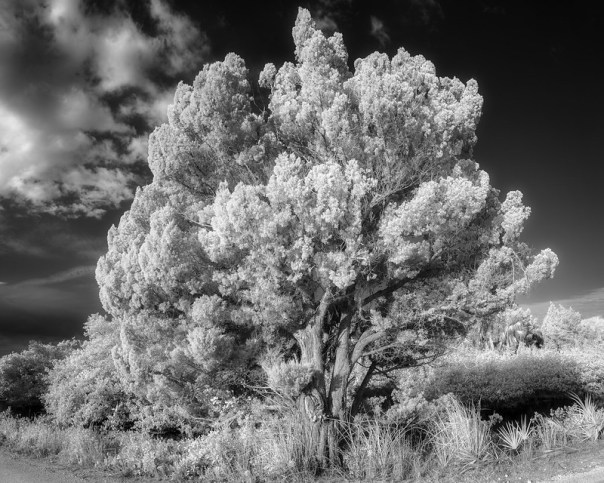I missed out last week on a trip with Kevin K. and Kevin M. to the Circle B Bar Reserve due to some dental work (ouch!). So I was eager to photograph something this week. My schedule was finally clear on Friday, and when I woke up early, I decided to go walk around Orlando Wetlands Park – one of my favorite spots in this area.
Whoops. I suspected something was wrong when I got out of the car and heard engines running. I walked out toward Lake Searcy in the dark and when I saw construction gear and no water in the corner cell, I turned around. Fortunately I’d gotten up way too early, so I still had time to change my “plans” and almost make sunrise over on the coast.
 Early morning on the river shore 2. Rotary Riverfront Park, Titusville. That’s the NASA Vehicle Assembly Building in the distance.
Early morning on the river shore 2. Rotary Riverfront Park, Titusville. That’s the NASA Vehicle Assembly Building in the distance.
After that, I headed to Merritt Island National Wildlife Refuge. There are a lot of winter migrants here now. The birds must’ve known beforehand about this week’s Polar Vortex. In addition to our year round species, I saw American Avocets, Lesser Scaups, Northern Shovelers, Hooded Mergansers, and fast warblers I couldn’t ID. I also stopped and talked to some folks on Black Point Wildlife Drive who were trying to find a Cinnamon Teal that’s been seen there. I heard later they found it again on Saturday.
 Hooded Mergansers. Two males taking turns displaying for the females in the area
Hooded Mergansers. Two males taking turns displaying for the females in the area
 Pair of porkers. Part of larger family just inside BPWD.
Pair of porkers. Part of larger family just inside BPWD.
 Spoonbill and reflection. This bird was so still, I had time to zoom in and make a three frame panorama. That really helps with details!
Spoonbill and reflection. This bird was so still, I had time to zoom in and make a three frame panorama. That really helps with details!
 Weathered Red Cedar. I was glad to see that my infrared camera still works after so much neglect!
Weathered Red Cedar. I was glad to see that my infrared camera still works after so much neglect!
So my photo adventure started out badly, but turned out well. Those engines I heard were pumps. I checked the OWP web page when I got home – they’re “demucking” Cell 14. And there’s also construction going on in Cell 16. I’ll go back in a while when the ruckus dies down. Don’t be like me – check the web page before you go. Even if you’ve been there many times!
Orlando Wetlands photos here: https://www.flickr.com/photos/edrosack/albums/72157639616792296
More Merritt Island National Wildlife Refuge photos here: https://www.flickr.com/photos/edrosack/albums/72157627776386723
Thanks for stopping by and reading my blog. Now – go make some photos!
©2019, Ed Rosack. All rights reserved





































